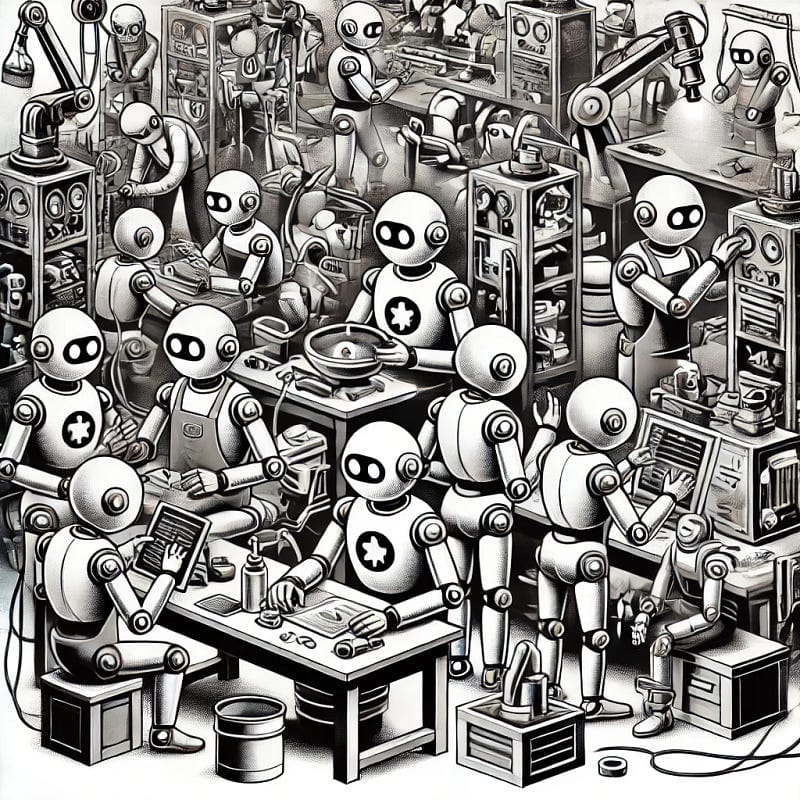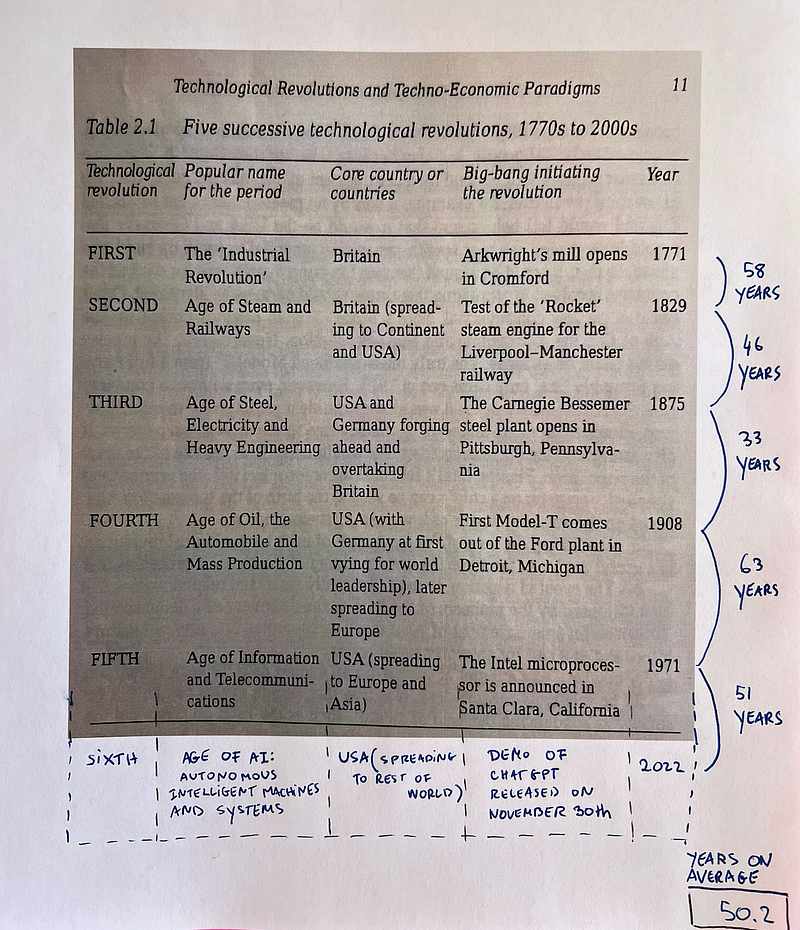Autonomous Intelligent Machines and Systems: Introduction
The goal of this series is to explore and develop in-depth knowledge, understanding, and expertise in autonomous intelligent machines and…

The goal of this series is to explore and develop in-depth knowledge, understanding, and expertise in autonomous intelligent machines and systems. We’ll start with a high-level overview and gradually break it down over time. We’ll conduct various deep dives, review research papers, discuss news, examine interesting companies, and analyze what is happening in both research and industry. The objective is to cover both the practical and theoretical aspects of intelligent machines and systems. [1]
There is no doubt that artificial intelligence will have a transformative impact on the economy, industry, and society. According to Carlota Perez’s “Technological Revolutions and Financial Capital” (2003), we observe a technological revolution about every 50 years or so on average. Since this book is written in 2003, let’s add another row called “Age of AI” which fits right in:

Each subsequent revolution builds upon previous ones, and artificial intelligence is now driving advancements in autonomous intelligent machines and systems that will permeate our everyday lives in expected and unexpected ways.
Today, the real-world impact of AI is limited. Innovation is currently too focused on new individual component algorithms, particularly in machine learning, rather than taking a more holistic approach and integrating algorithms with complete autonomous systems. This series will explore various topics in Machine Learning, Robotics, Vision, Cyber-Physical Systems, Control and Verification.
Machine Learning
Machine learning is central to autonomous systems. As large datasets are becoming available and computing power increases, the modern data-driven machine learning approach is transforming fields like language models, computer vision and robotics. Topics covered will include subjects such as inference, signal processing, supervised and unsupervised learning, learning theory, graphical models, ensemble learning, neural networks back-propagation, deep learning, machine learning in production, optimization, automatic differentiation, reinforcement learning, system safety, and more.
Robotics and Vision
Real world autonomous systems need to be reliable and able to interpret complex scenes, scenarios and environments; they need to be able to identify people and vehicles in motion, navigate unknown environments and survive against the elements. Topics covered will include subjects such as visual geometry, deep learning, scene perception, object identification, generative models, visual tracking, segmentation, path planning, visual navigation, robot learning, locomotion, motion planning and more.
Cyber — Physical Systems
Cyber — physical systems demand seamless connection between sensing, monitoring and actuating capabilities. Currently, these systems face key barriers such as 1) problematic context-awareness systems such as indoor location sensing 2) unreliability of sensors and actuators around calibration, quality, energy management or fault detection and 3) security and privacy concerns. Topics covered will include sensor & actuator networks, topology control, cross-modality learning, privacy and security, authentication and key management, embedded systems and more.
Control and Verification
Autonomous systems must be safe and dependable. Software on embedded controllers must not crash. Abnormal conditions need to have proper alarms and safety-critical actions. There is a need for automated methods that confirm given requirements are satisfied. We need to be able to safely control the complex interplay between discrete, continuous and probabilistic dynamics. Topics covered will include modern control, deep reinforcement learning for process control, systems verification, adversarial inputs, computational game theory and multi-agent planning.
Summary
In this series, we aim to provide a comprehensive exploration of autonomous intelligent machines and systems. Starting with a broad overview, we will delve into various technical domains such as machine learning, robotics, cyber-physical systems, and control and verification. Our focus will be on both the theoretical underpinnings and practical applications of these technologies, offering insights into how they will shape the future of industries and society. By examining the current limitations and future potential of autonomous intelligent machines and systems, we hope to foster a deeper understanding of this transformative field.
References:
[1] Engineering, Exploring and Exploiting the Building Blocks of Embodied Intelligence — An EPSRC Programme Grant
[2] Carlota Perez’s “Technological Revolutions and Financial Capital” (2003)



